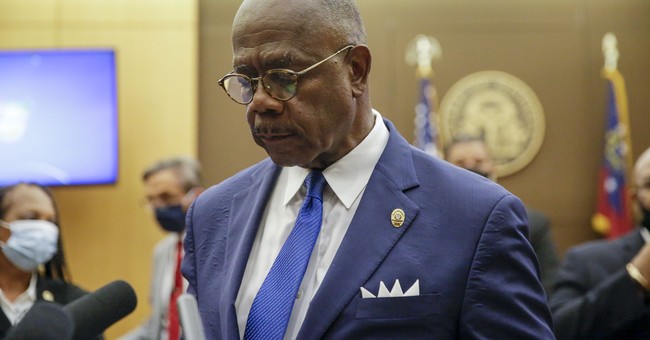
This is Part 3 of my story on the press conference held on Wednesday morning by Fulton County, Georgia, District Attorney Paul Howard, during which he announced that former Atlanta PD Officer Garrett Rolfe was being charged with “Felony Murder” — and 10 other counts — in the shooting death of Rayshard Brooks, and how in the moments before he was shot Brooks had committed felony aggravated assault at Off. Garrett and a second Atlanta PD Officer, Devin Brosnan. During a fight to avoid being arrested for DUI, Brooks was able to wrestle Off. Brosnan’s Taser weapon away from him, he used the Taser against Off. Brosnan, and attempted to use the Taser against Off. Rolfe, but missed when he fired at Off. Rolfe who was chasing him through the parking lot of a Wendy’s restaurant.
Part One on the press conference by DA Howard can be found here: Reports — Atlanta PD Officers Walking off Job Tonight — Murder Charges Filed by Fulton County DA
Part Two on the press conference can be found here: Part Two on the Ridiculous Press Conference by Atlanta DA on Murder Charges Filed Against Atlanta PD Officers
At the press conference DA Howard announced that Off. Rolfe was being charged with 11 crimes: Felony Murder; 4 counts of “Aggravated Assault with a Deadly Weapon”; 1 count of criminal damage to property; 4 counts of “Violation of Oath” relating to his violation of Atlanta PD policies; and one count of “Aggravated Assault” for allegedly having kicked the “victim” while he lay on the pavement after having been shot by Off. Rolfe.
Felony murder under Georgia law is the killing of another person while in the process of committing an underlying felony offense. It is an offense punishable by the death penalty.
As DA Howard said yesterday, the underlying felony is the charge of “Aggravated Assault with a Deadly Weapon.”
During the press conference on Wednesday morning to announce the charges, DA Howard spent several minutes going through his litany of observations about the “calm” and “cooperative” nature of Mr. Brooks for over the course of the 44 minute encounter that preceded the shooting.
After establishing Mr. Brooks to have been a peaceful, law-abiding — and UNARMED citizen — DA Howard immediately pivoted to a description of alleged actions of the two officers AFTER the shooting.
It was jarring that DA Howard did not mention any aspect of the unlawful resisting of arrest by Mr. Brooks, nor did DA Howard mention that Mr. Brooks had used Off. Devin Brosnan’s Taser against Off. Brosnan during the struggle prior to Brooks escaping the officers’ combined efforts in the struggle and running away. Use of the Taser on Off. Brosnan was felony “aggravated assault” committed by Brooks, and makes him in no uncertain terms a “fleeing felon” — a term that is important as I will get to below.
At no time did DA Howard EVER come back to the conduct of Mr. Brooks between the moment Officer Garret Rolfe tried to handcuff him, and when Off. Rolfe shot Brooks less than 2 seconds after Brooks has fired the Off. Brosnan’s Taser at Off. Rolfe.
All of DA Howard’s descriptions about Brooks were listed on a PowerPoint slide under the banner headline “Brooks Was Not A Threat.” I guess that is one conclusion you could draw if you simply ignored the approximately 35 seconds of video and audio during which Brooks is fighting with the officers, wrestles a weapon away from one officer and uses it on him, then takes off running and while doing so turns his torso and head around and fires the Taser at the second officer who is approximately 10 feet behind him. Ignore those 35 seconds and I guess you could say “Brooks Was Not A Threat.”
You would be a dishonest and duplicitous liar, but you could say that.
But DA Howard did something else in the press conference that is very important and is being overlooked by the press and commentators. He covered in some detail the issue of the third shot fired by Off. Rolfe that missed Brooks, and struck a the quarter-panel next to a wheel on the passenger side of a Chevy Trailblazer that was in the drive-thru line of the Wendy’s. That vehicle had three people inside who were from West Memphis Tennessee, and now have an attorney from “The Cochran Law Firm” representing them. The driver of that car and his attorney were present at the press conference, and DA Howard made a big show of offering his apology to the driver on behalf of the people of Fulton County for what he had gone through at the Wendy’s.
This takes on new significance when you see that DA Howard has charged three counts of “Aggravated Assault with a Deadly Weapon” against Off. Rolfe in connection with this wayward round – a separate Count for each occupant of the Chevy who are named as victims.
Why is this important? Because they had not unlawfully resisted arrest, nor were any of the three of them “fleeing felons” as was Mr. Brooks at the time he was shot. But according to DA Howard, they are now victims of Off. Rolfe’s illegal acts just like Brooks was a victim of Off. Rolfe’s illegal acts.
I expect that DA Howard and his staff are setting up an approach to the case where they will take the position that even if shooting Brooks was excusable because of what Brooks had done, Off. Rolfe can still be convicted with regard to the stray round that hit the Chevy. Combining that felony, with Brooks’ death as part of the commission of that felony — they will argue — still supports the felony murder charge against Off. Rolfe.
This strikes me as not correct under the law. There are cases where police have shot and killed innocent bystanders — or even victims of crimes themselves — and the question of culpability always turns on whether the decision to shoot was lawful or unlawful, not on who suffered as a result of a stray round. But I’ll leave analysis of that subject to a later story.
So what is the law? I almost feel like that should be a Part 4 — and a deeper dive into the case law on this subject will probably need to be left to another article. But at this point I’ll just give an overview based on some famous (if you study the subject) decisions by the Supreme Court on the use of force by police — including deadly force — in connection with arresting persons suspected of criminal conduct.
DA Howard made reference to two of the cases — Tennessee v. Garner decided in 1985, and Graham v. Connor, decided in 1989.
Garner involved a 17 year old who was shot and killed by a Tennessee law enforcement officer as he was going over the fence surrounding a house he was suspected of having burglarized. At issue was the constitutionality of a Tennessee statute that provided if, after a police officer has given notice of an intent to arrest a criminal suspect, the suspect flees or forcibly resists, “the officer may use all the necessary means to effect the arrest.” The facts were that the Officer used deadly force even though he was reasonably certain the suspect was unarmed, was only 17 or 18 years old, and was of a “slight build” — indicating he did not represent a physical threat to the Officer.
In this kind of case, the use of deadly force by a law enforcement officer is considered a “seizure” of the suspect’s body under the Fourth Amendment — an officer shoots a fleeing suspect in order to be able to arrest that suspect, not to punish him — and the Fourth Amendment prohibits “unreasonable seizures”.
The Supreme Court held that the Tennessee statute was unconstitutional, as it authorized “unreasonable seizures” in violation of the Fourth Amendment through the use of deadly force. The Court began its analysis by pointing out the need to balance competing interests of citizens and the interests of law enforcement:
“[w]e must balance the nature and quality of the intrusion on the individual’s Fourth Amendment interests against the importance of the governmental interests alleged to justify the intrusion.”
The Court continued:
The use of deadly force to prevent the escape of all felony suspects, whatever the circumstances, is constitutionally unreasonable…. Where the suspect poses no immediate threat to the officer and no threat to others, the harm resulting from failing to apprehend him does not justify the use of deadly force to do so. It is no doubt unfortunate when a suspect who is in sight escapes, but the fact that the police arrive a little late or are a little slower afoot does not always justify killing the suspect. A police officer may not seize an unarmed, non-dangerous suspect by shooting him dead.
When you are watching news reports or reading press coverage of the prosecution of Off. Rolfe, this passage is the reason why Brooks is repeatedly being referred to as “unarmed”. DA Howard has to make that fact stick, and yesterday he attempted to do so by claiming that Off. Rolfe knew that once the Taser carried by Brooks had been fired twice it was no longer operative, and therefore no longer a threat to Off. Rolfe or anyone else.
The interval between Brooks firing the Taser at Off. Rolfe and Off. Rolfe shooting Brooks is less than 2 seconds based on a review of the Wendy’s surveillance video. Good luck with that DA Howard.
But that is not all the Supreme Court said in Garner. I don’t recall hearing DA Howard mention the next passage:
Where the officer has probable cause to believe that the suspect poses a threat of serious physical harm, either to the officer or to others, it is not constitutionally unreasonable to prevent escape by using deadly force. Thus, if the suspect threatens the officer with a weapon or there is probable cause to believe that he has committed a crime involving the infliction or threatened infliction of serious physical harm, deadly force may be used if necessary to prevent escape, and if, where feasible, some warning has been given.
This is where we get to the part why the felony murder charge is so idiotic. Remember this is a case that DA Howard highlighted as key to their decision to charge Off. Rolfe with “felony murder.” If Off. Rolfe’s actions were justified then they were lawful activities of a sworn law enforcement officer with powers to arreest, and they cannot be said to constitute “aggravated assault.”
Did Off. Rolfe have “probable cause to believe” Brooks posed a threat of serious physical harm?
Was Off. Rolfe threatened with a weapon by Brooks?
Did Off. Rolfe have “probable cause to believe” Brooks had “committed a crime involving the infliction or threatened infliction of serious physical harm”?
If the answer to any of these questions is “Yes”, then the Supreme Court has held that use of deadly force to prevent escape by Brooks was not “unreasonable.” Brooks fired the Taser at Off. Rolfe. Brooks has already used the Taser on Off. Brosnan. Based on those two FACTS, the answer to both questions is yes, so the Supreme Court has held that Off. Rolfe was allowed to use deadly force to prevent Brooks’ escape.
The third question reflects what has come to be known as the “fleeing felon” rule. Deadly force can be used to prevent the escape of someone police have probable cause to believe has committed a violent felony not because that persons represents a threat to the police officer in pursuit, but because allowing the escape of that “fleeing felon” into the community represents a threat to the safety of the community.
But DA Howard mentioned NONE OF THIS in his press conference.
The second Supreme Court decision sited by DA Howard in his press conference was Graham v. Connor. Just like Garner, Connor is not a criminal case, it is also a civil case.
Plaintiff Graham was the subject of an “investigatory detention” by police Officer Connor in connection with Connor’s observations that Graham had “hurriedly” entered and exited a convenience store which caught Officer Connor’s attention. Graham was a diabetic and was beginning to feel the onset of an insulin reaction, and that reaction was made worse while he was being detained by Officer Connor who had handcuffed him and put him in the back of his patrol car until he could learn what had happened inside the store. Upon learning that nothing had happened, Officer Connor released Graham.
Graham sued Connor on the basis that excessive force had been used against him, and that the seizure of his person for the investigatory detention was “unreasonable” under the Fourth Amendment.
The significance of the decision to the shooting of Brooks by Off. Rolfe is that it holds that what constitutes “reasonableness” with regard to a decision to a “seizure” under the Fourth Amendment is an “objective” standard. What that means is that whether a particular officer’s actions are “reasonable” or “unreasonable” is not a function of what the particular officer saw or believed to be happening, but rather turn on a view of what was “objectively reasonable” under the facts and circumstances of what was happening.
Below is a lengthy quote from Connor that I’m not going to break down here — I’ll come back to it in a future article as this case moves forward — IF it moves forward at all. Here’s what the Supreme Court said about “reasonableness” under the Fourth Amendment — note particularly the language about not using 20-20 hindsight to second guess the officer’s conduct. I’ve removed internal citations to other Supreme Court cases in order to make the long passage easier to read.
The “reasonableness” of a particular use of force must be judged from the perspective of a reasonable officer on the scene, rather than with the 20/20 vision of hindsight…. With respect to a claim of excessive force, the same standard of reasonableness at the moment applies: “Not every push or shove, even if it may later seem unnecessary in the peace of a judge’s chambers,” violates the Fourth Amendment. The calculus of reasonableness must embody allowance for the fact that police officers are often forced to make split-second judgments — in circumstances that are tense, uncertain, and rapidly evolving — about the amount of force that is necessary in a particular situation.
As in other Fourth Amendment contexts, however, the “reasonableness” inquiry in an excessive force case is an objective one: the question is whether the officers’ actions are “objectively reasonable” in light of the facts and circumstances confronting them, without regard to their underlying intent or motivation…. An officer’s evil intentions will not make a Fourth Amendment violation out of an objectively reasonable use of force; nor will an officer’s good intentions make an objectively unreasonable use of force constitutional.
The last sentence that I’ve highlighted shows the malicious and evil nature of DA Howard’s comments at the press conference. He all but said Off. Rolfe was motivated by racial animus in his decision to shoot “unarmed” Rayshard Brooks who was “Not A Threat.”
But the bolded langauge tells you that “evil intentions” or “good intentions” of the officer are are irrelevant on the question of whether Off. Rolfe’s decision to stop Brooks by shooting him was lawful or unlawful.
Yesterday’s press conference was a “Dog and Pony” show to appease — AND APPEAL TO — the “mob” demanding a white police officer’s head on a platter.
DA Howard is a disgrace. The citizens of Fulton County, Georgia, will disgrace themselves if they return this clown to office in August. If they do, it will be as a reward for the clown show he is conducting.
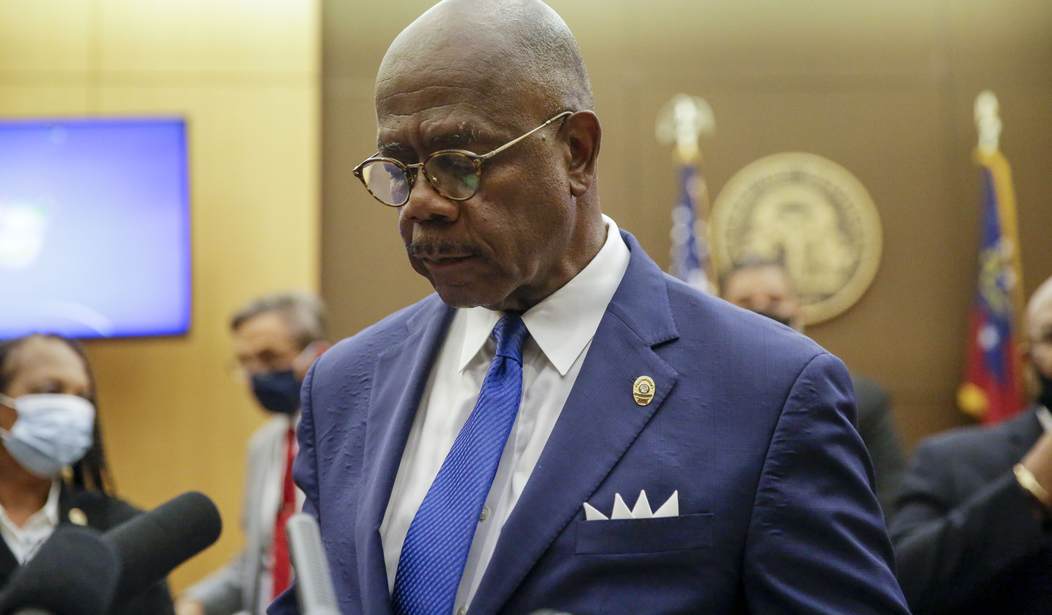










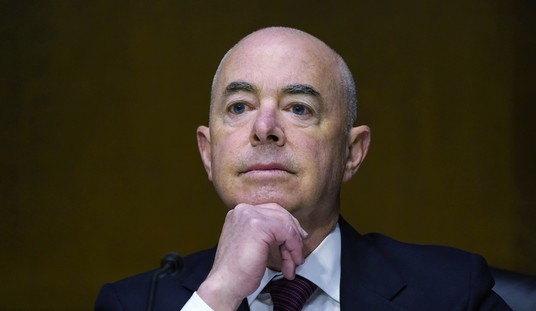
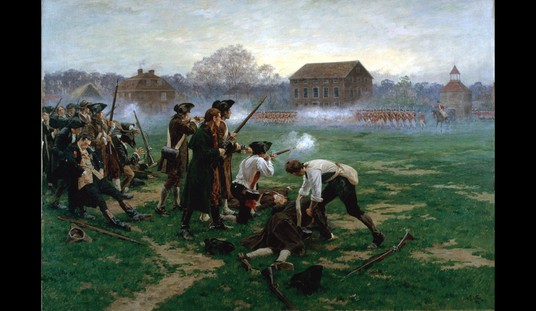

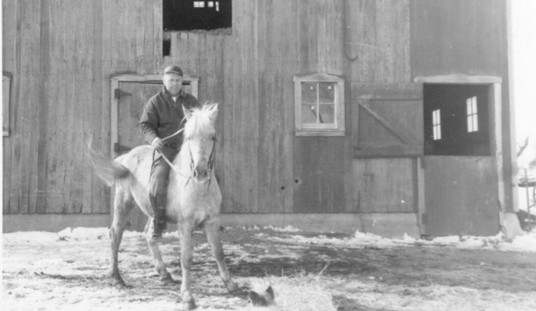
Join the conversation as a VIP Member